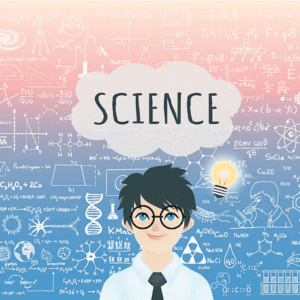Overview of Future Technology | Computer Awareness and Proficiency - SSC CGL PDF Download
Future Technology
- "Future Technology" is a term typically used to describe emerging technologies.
- It can also refer to the ongoing development of existing technologies.
- The meaning of this term can vary slightly depending on the context, such as media, business, science, or education.
- It generally refers to technologies that are currently under development or expected to become available within the next four to five years.
- These technologies are anticipated to have significant social or economic impacts.
Introduction to Internet of Things (IoT)

- The Internet of Things (IoT) is a network where all physical objects are connected to the Internet through network devices, enabling data exchange.
- IoT allows for remote control of objects via existing network infrastructure.
- The aim of IoT is to extend Internet connectivity from standard devices like computers, mobile phones, and tablets to simpler devices such as toasters.
Components of IoT
- Sensors: Sensors or devices are crucial for collecting real-time data from the environment. This data can vary in complexity, from simple temperature readings to complex video feeds.
- Connectivity: The collected data is sent to a cloud infrastructure. Sensors must connect to the cloud using various communication media such as mobile or satellite networks, Bluetooth, Wi-Fi, or WAN.
- Data Processing: Once data is collected and sent to the cloud, software processes it. This can range from simple tasks like checking temperatures to complex tasks like object identification using computer vision on video feeds.
- User Interface: The processed information is made available to the end user, often through alarms on their phones or notifications via text or email. Users may also have interfaces to actively monitor their IoT systems.
Advantages of IoT
- Technical Optimization: IoT technology improves and enhances existing technologies.
- Reduce Waste: IoT provides real-time information, leading to better decision-making and resource management.
- Improved Customer Engagement: IoT enhances customer experience by detecting problems and improving processes.
- Improved Data Collection: IoT reduces the limitations of traditional data collection methods, enabling more active data collection.
Disadvantages of IoT
- Security: IoT systems are interconnected and communicate over networks, offering limited control despite security measures, which can lead to various network attacks.
- Privacy: IoT systems can provide substantial personal data without active user participation.
- Complexity: Designing, developing, maintaining, and enabling large-scale IoT systems is highly complex.
Big Data Analytics
- Big data analytics involves collecting, organizing, and analyzing large sets of data to discover patterns and useful information.
- This helps organizations better understand the information within the data and identify the most important data for business and future decision-making.
Characteristics of Big Data Analytics
- Variety: Refers to structured, unstructured, and semi-structured data collected from multiple sources. Unlike the past, where data was mainly from spreadsheets and databases, today it includes emails, PDFs, photos, etc.
- Velocity: Refers to the speed at which data is created in real-time, including the rate of change and the linking of incoming data sets at varying speeds.
- Volume: Indicates the vast amounts of data generated daily from various sources like social media platforms, business processes, machines, networks, etc.
Applications of Big Data Analytics
- Government: Government agencies use analytics to manage utilities, run agencies, address traffic congestion, and prevent crimes.
- Healthcare: Predictive analytics in healthcare provides personalized services to patients.
- Banking: Big data helps detect fraudulent activities in real time, such as misuse of credit/debit cards.
- Manufacturing: Big data analytics improves product quality and output by minimizing waste.
Virtual Reality (VR)
- Virtual Reality is a computer interface designed to mimic the real world beyond a flat monitor, providing immersive 3D visual experiences.
- It creates an artificial environment using software, making the user perceive it as real.
- On a computer, VR is mainly experienced through sight and sound.
- VR technology is used in fields such as machine engineering, education, design, training, and entertainment.
Applications of Virtual Reality
- Gaming: VR devices provide immersive gaming experiences. Devices like Wii Remote, PlayStation Move/Eye, and Kinect use VR to track player input.
- Healthcare: VR models help healthcare professionals prepare for real-world procedures.
- Education: VR enhances teaching and learning, allowing large groups of students to interact in a 3D environment.
- Entertainment: VR enhances experiences in the entertainment industry with 3D films and emotional connections.
- Business: VR is used for virtual business tours, employee training, and providing new employees with a 360° view of products.
 |
Test: Overview of Future Technology - 1
|
Start Test |
Artificial Intelligence (AI)

- Artificial Intelligence (AI) is a branch of computer science focused on creating machines that can perform tasks that typically require human intelligence.
- This includes capabilities like learning and problem-solving.
- AI involves knowledge engineering, which is essential for machines to act and react like humans.
- To achieve this, AI must access vast amounts of information about objects, categories, properties, and the relationships between them.
Types of Artificial Intelligence
Weak AI: These systems are designed to perform specific tasks, such as playing chess or serving as virtual assistants like Amazon's Alexa.
Strong AI: These systems perform tasks that are considered human-like and are more complex. Examples include self-driving cars and robots used in hospital operating rooms.
Applications of Artificial Intelligence
- Business: AI is used in robotic process automation to handle repetitive tasks previously done by humans.
- Gaming: AI has become integral to the gaming industry, achieving significant advancements.
- Healthcare: Machine learning is used for faster and more accurate diagnoses. Notably, IBM’s Watson understands natural language and can respond to questions.
- Banking: Banks use AI for customer support, anomaly detection, and fraud prevention. AI enhances security in various sectors, including retail and finance.
- Autonomous Vehicles: Self-driving cars use sensors to understand their environment and make decisions based on the gathered data.
Blockchain Technology
Blockchain is an encrypted, distributed database that records data. It serves as a digital ledger for transactions and contracts, enabling direct interaction and transactions over the internet without third-party interference. Blockchain's fraud-resistant features have the potential to revolutionize various business sectors, making processes smarter, more secure, transparent, and efficient.
Advantages of Blockchain Technology
- Enables smart devices to communicate more effectively and quickly.
- Eliminates intermediaries involved in record-keeping and asset transfer.
- Provides durability, reliability, and longevity through a decentralized network.
- Ensures immutability of data, preventing fraud by manipulating transaction history.
- Enhances accountability for all participants.
Challenges of Blockchain Technology
- Verifying transactions requires significant power, i.e., electricity.
- Transaction speed can be slow as each block must be verified by the distributed network.
3D Printing / Additive Manufacturing
3D printing is a manufacturing process that creates three-dimensional objects by adding material layer by layer, guided by a 3D digital model. It uses Computer-Aided Design (CAD) software or 3D object scanners to direct the hardware in depositing material in precise geometric shapes.
How 3D Printing Works
- Create a 3D model using CAD or equivalent 3D design software.
- Convert the drawing to an STL (Standard Tessellation Language) file format.
- Transfer the STL file to the computer controlling the 3D printer, specifying size and orientation.
- Prepare for printing, which may include refilling materials.
- Begin the building process. Each layer is typically 0.1 mm thick, so printing can take hours or days depending on the object's size.
- Remove the object from the printer, avoiding contact with toxins or hot surfaces.
- Perform any necessary post-processing, such as brushing off residue or washing the object.
- Use the newly printed object.
Examples of 3D Printing Applications
- Architectural scale models and maquettes.
- Eyewear.
- Dental products.
- Design items like lamps and furniture.
- Reconstructing bones and body parts in forensic pathology.
- Reconstructing heavily damaged evidence from crime scenes.
Robotic Process Automation (RPA)
 Robotic Process Automation (RPA) uses specialized software programs, known as software robots, to automate and standardize repeatable business processes. Unlike physical robots, software robotsemulate human activities by interacting with applications just like a person would. RPA allows business professionals to easily configure these robots to automate repetitive tasks across multiple systems, thereby enhancing business processes by filling in automation gaps.
Robotic Process Automation (RPA) uses specialized software programs, known as software robots, to automate and standardize repeatable business processes. Unlike physical robots, software robotsemulate human activities by interacting with applications just like a person would. RPA allows business professionals to easily configure these robots to automate repetitive tasks across multiple systems, thereby enhancing business processes by filling in automation gaps.
 |
Download the notes
Overview of Future Technology
|
Download as PDF |
Applications of RPA
- Customer Service: RPA improves customer service by automating tasks in contact centers, such as verifying e-signatures, uploading scanned documents, and validating information for automatic approvals or rejections.
- Healthcare: Medical organizations utilize RPA for managing patient records, handling claims, providing customer support, managing accounts, billing, reporting, and analytics.
- Supply Chain Management: RPA automates procurement, order processing and payments, inventory monitoring, and shipment tracking.
- Financial Services: Financial services companies use RPA for foreign exchange payments, automating account openings and closings, managing audit requests, and processing insurance claims.
- Accounting: Organizations deploy RPA for general accounting, operational accounting, transactional reporting, and budgeting.
Fifth Generation (5G)
The 5G standard is designed for broadband cellular networks and began global deployment in 2019. It aims to enhance network connections by addressing issues of speed, latency, and utility that previous generations could not. 5G promises data speeds up to 100 times faster than 4G networks.
Globally, 5G deployment is transitioning from trials to early commercialization. In India, operators like Airtel, Vodafone, Idea, Reliance, and Jio have partnered with vendors like Ericsson, Huawei, and Samsung for planned trials by the end of 2020, with commercial rollout expected in 2020.
Advantages of 5G
Greater Speed in Transmission: Speeds can reach 15 to 20 Gbps, allowing instant access to files, programs, and remote applications.
Lower Latency: Latency, the time between initiating a command and its execution, will be ten times lower in 5G than in 4G, enabling real-time remote actions.
Greater Number of Connected Devices: 5G will support millions of connected devices per square kilometer, allowing all connected devices to instantly exchange information.
New Technology Options: Improved network speeds will facilitate the transition of tasks to smart devices, potentially unlocking new capabilities previously unavailable.
Disadvantages of 5G
Obstruction Can Impact Connectivity: The range of 5G is limited as high-frequency waves travel only short distances and are interrupted by physical obstacles like trees, buildings, and walls. To mitigate this, the telecom industry is extending cell towers to increase coverage.
Limitation of Rural Access: While urban areas will benefit from 5G, rural areas may not see the same level of connectivity improvement.
Battery Drain on Devices: Devices connected to 5G tend to have shorter battery life and can become excessively hot. Advancements in battery technology are needed to support enhanced connectivity, allowing devices to operate for a full day on a single charge.
|
48 videos|24 docs|33 tests
|
FAQs on Overview of Future Technology - Computer Awareness and Proficiency - SSC CGL
| 1. What is the Internet of Things (IoT)? |  |
| 2. How does Virtual Reality (VR) technology work? |  |
| 3. What are the applications of Artificial Intelligence (AI)? |  |
| 4. How does Blockchain Technology ensure security in transactions? |  |
| 5. What are the benefits of Robotic Process Automation (RPA) in business operations? |  |
































